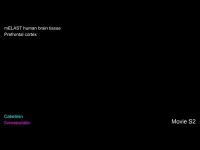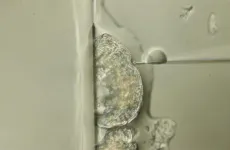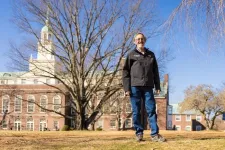(Press-News.org) A new platform enables simultaneous capture of protein expression, cellular morphology, neural projection, and synapse distribution in large-scale human brain tissues at multiple scales, researchers report. The system ensures the preservation of cellular architecture while enabling detailed imaging and analysis of large human brain tissue samples at unprecedented resolution and speed. The authors demonstrated its utility by processing whole human brain hemispheres to reveal pathological features of Alzheimer’s disease tissue. “We envision that this scalable technology platform will advance our understanding of the human organ functions and disease mechanisms to spur development of new therapies,” say the authors. Detailed mapping of the anatomical and molecular architectures of brain cells and their connectivity is crucial for understanding human brain function and the impact of brain injuries and diseases. However, current neuroimaging technologies, such as functional magnetic resonance imaging, lack the spatial resolution required to capture the brain’s intricate structural, cellular, and molecular details. As part of the BRAIN initiative cell census network (BICCN), Juhyuk Park and colleagues developed a platform that seamlessly combines new mechanical, chemical, and computational tools for creating a brain-wide three-dimensional human brain cell atlas at subcellular resolution. Park et al.’s novel platform integrates three core elements to enable slicing, processing, and imaging of human-organ scale brain tissues; the MEGAtome – a vibrating microtome – enables ultra-precision tissue slicing without loss of cellular connectivity; a tissue-gel technology termed mELAST transforms tissue samples into elastic and reversibly expandable hydrogels that facilitate high-throughput multiscale imaging; and the UNSLICE computational pipeline reconstructs three-dimensional axonal network connectivity across multiple tissue slabs processed by MEGAtome and mELAST.
For reporters interested in trends, the platform described in this study allowed researchers of the BICCN to examine the human brain in detail and contributed to a collection of studies published in Science, Science Advances, and Science Translational Medicine in October and November 2023.
END
Novel platform enables unprecedented imaging of the human brain
2024-06-13
ELSE PRESS RELEASES FROM THIS DATE:
Technologies enable 3D imaging of whole human brain hemispheres at subcellular resolution
2024-06-13
Observing anything and everything within the human brain, no matter how large or small while it is fully intact, has been an out-of-reach dream of neuroscience for decades, but in a new study in Science, an MIT-based team describes a technology pipeline that enabled them to finely process, richly label and sharply image full hemispheres of the brains of two donors—one with Alzheimer’s and one without—at high resolution and speed.
“We performed holistic imaging of human brain tissues at multiple resolutions ...
Modifying genomes of tardigrades to unravel their secrets
2024-06-13
Some species of tardigrades are highly and unusually resilient to various extreme conditions fatal to most other forms of life. The genetic basis for these exceptional abilities remains elusive. For the first time, researchers from the University of Tokyo successfully edited genes using the CRISPR technique in a highly resilient tardigrade species previously impossible to study with genome-editing tools. The successful delivery of CRISPR to an asexual tardigrade species directly produces gene-edited offspring. The design and ...
The yuck factor counteracts sustainable laundry habits
2024-06-13
Most people today would lean towards environmentally friendly life choices, but not at the expense of being clean. When it comes to our washing habits, the fear of being perceived as dirty often wins out over the desire to act in an environmentally friendly way. And the more inclined we are to feel disgusted, the more we wash our clothes. This is shown by a unique study from Chalmers University of Technology, Sweden, that examines the driving forces behind our laundering behaviours and provides new tools for how people's environmental impact can be reduced.
Today, we wash our clothes more than ever ...
Scientists unravel drivers of the global Zinc cycle in our oceans, with implications for a changing climate
2024-06-13
The important role of the Southern Ocean in global biological processes and the carbon cycle has been confirmed anew by a study published in Science this week that, for the first time based on field evidence, reveals the underappreciated role of inorganic Zinc particles in these cycles.
The Southern Ocean plays the greatest role in global phytoplankton productivity, which is responsible for absorbing atmospheric carbon dioxide. In these processes, Zinc, present in trace quantities in seawater, is an essential micronutrient critical to many biochemical processes in marine organisms and particularly for polar phytoplankton ...
Dopamine linked to mentalising abilities
2024-06-13
A link between the neurotransmitter dopamine and the mentalising abilities of healthy people has been identified for the first time in a new study.
Mentalising describes the act of attributing and understanding mental states (such as thoughts, feelings or intentions) in other people and in oneself. Researchers at the University of Birmingham have been able to show that changing people’s brain dopamine levels affects their mentalising abilities. Their results are published today in PLOS Biology.
Dopamine ...
The scary, yet promising world of phages, the pathogen's pathogen
2024-06-13
Bacteriophages, viruses that attack and destroy bacteria, are everywhere in the natural world where they play a vital role in regulating microbe populations in ways that are not yet well understood.
New research led by the University of Utah and University College London (UCL) has found that plant bacterial pathogens are able to repurpose elements of their own bacteriophages, or phages, to wipe out competing microbes. These surprise findings suggest such phage-derived elements could someday be harnessed as an alternative to antibiotics, according to Talia Karasov, an assistant professor in the U’s School of ...
Rising carbon dioxide may be diluting plant nutrients, threatening herbivores
2024-06-13
Smithsonian Conservation Research Brief:
Carbon dioxide-fueled accelerated plant growth dilutes nutrients, impacting herbivore populations.
A new study from researchers at the Smithsonian’s National Zoo and Conservation Biology Institute (NZCBI) warns that as human activities increase carbon dioxide (CO2) levels in the atmosphere, they may decrease the nutrient contents of plants. Declines in nutrient content, known as Nutrient Dilution, may already be harming plant-eating animals and could cause further population declines farther up the ecological chain. The paper, published today in the journal Trends ...
Avi Wigderson to deliver Turing Lecture at ACM Symposium on Theory of Computing
2024-06-13
ACM, the Association for Computing Machinery, is pleased to announce that 2023 ACM A.M. Turing Award recipient Avi Wigderson will give his Turing Lecture at the 2024 ACM Symposium on the Theory of Computing (STOC) on Thursday, June 27 in Vancouver, British Columbia, Canada. Wigderson received the A.M. Turing Award for foundational contributions to the theory of computation, including reshaping our understanding of the role of randomness in computation, and for his decades of intellectual leadership in theoretical computer science.
In "Alan Turing: A TCS Role Model," Wigderson ...
Researchers to develop predictive model for opioid addiction in high-risk patients
2024-06-13
Opioids are a broad group of effective pain-relieving medicines that can become highly addictive in some individuals. According to government sources, nearly 40 million people are addicted to illicit drugs worldwide. In 2017, the U.S. Department of Health and Human Services declared the opioid crisis a national public health emergency. To combat the opioid epidemic, researchers at University of California San Diego School of Medicine will develop an AI model that will more accurately predict opioid addiction in high-risk patients.
The project is funded through a three-year contract with Wellcome Leap as part of a $50 million groundbreaking initiative, called ...
ADHD meds may help pregnant patients control opioid use disorder
2024-06-13
Opioid overdoses for pregnant patients are at an all-time high in the United States, even as overall numbers are improving. Attention deficit hyperactivity disorder (ADHD) is highly correlated with substance use disorders, yet treatment protocols to help expecting parents manage opioid use disorders and ADHD together are essentially nonexistent.
New research from Washington University School of Medicine in St. Louis may help change that. A study published in Nature Mental Health indicates that patients with opioid use disorders and ADHD who remain on their ADHD medications during their pregnancies are far more likely to adhere to treatment for opioid use, and far less likely to ...




